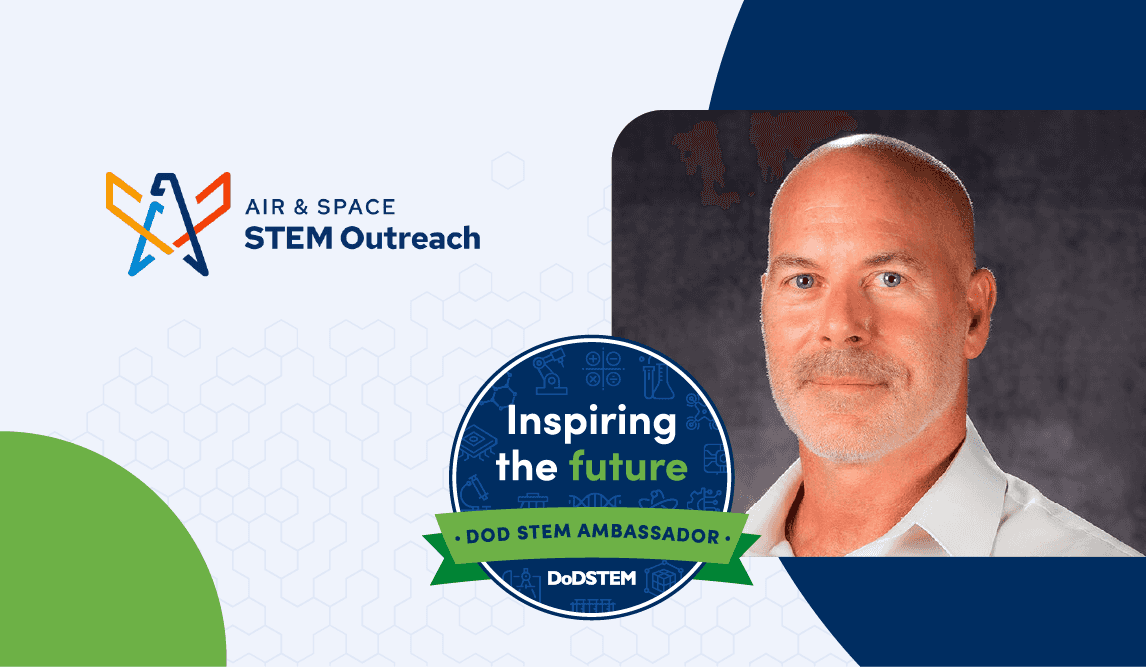Building STEM Ecosystems: A Beginner's Guide
01 Apr 2024
Ken Robinson, a DoD STEM Ambassador, Shares How to Create a STEM Ecosystem from Scratch
What is a STEM ecosystem and how do I participate? Where is the brigade, and how can they help? A STEM ecosystem is a network, consortium, or multisector partnership of heterogenous organizations sharing a common STEM vision. A brigade consists of all STEM partners within the STEM ecosystem. This blog outlines the steps for finding or creating the right STEM ecosystem for you.

The following was written by Ken Robinson, a high school engineering and information technology teacher, and a DoD STEM Ambassador. DoD STEM Ambassadors work with the Defense STEM Education Consortium (DSEC) to advance STEM outreach for students who are underrepresented in STEM or military connected. Robinson was selected by Air Force STEM as its DoD STEM ambassador for the 2022-2023 school year.
The Programme for International Student Assessment (PISA) has consistently identified a concerning deficiency in our nation's math and science domains. Our ability to maintain a competitive edge in the current global market is in question. In fact, according to the National Science and Technology Council, “Now more than ever the innovation capacity of the United States—and its prosperity and security—depends on an effective and inclusive STEM education ecosystem.”
This is a national crisis, and although teachers are on the front line, they need to know that there is a full brigade waiting to support their every move. Teachers often feel they are left to fend for themselves, so it is very important they understand that there are hundreds of like-minded supporters eager to join the fight and help put our national education system back on top where it belongs, while ensuring we maintain that competitive edge across all disciplines.
So, what is this STEM ecosystem? Where is the brigade, and how can they help? A STEM ecosystem is a network, consortium, or multisector partnership of heterogenous organizations sharing a common STEM vision. A brigade consists of all STEM partners within the STEM ecosystem. DSEC is a great example of a large ecosystem providing STEM opportunities and pathways utilizing DoD laboratories and facilities. There are numerous STEM ecosystems scattered throughout the United States.
But what if you don't have a registered hub or STEM organization in your geographic area? In those cases, you can either connect to the closest hub and collaborate virtually, or you can do what I did and create your own STEM ecosystem. In fact, it was not until I spoke with the folks at the Teaching Institute for Excellence in STEM (TIES) that I learned that this is exactly what I had done.
Below are the steps I took to connect with my brigade and establish an effective regional STEM ecosystem.
- Locate possible partners. Identify regional nonprofit organizations that conduct and/or promote STEM (e.g., AFCEA and AFA local chapters). My primary partner was AFCEA Chapter 158, as they had the largest regional presence including a number of prominent industry partners. Also, because of the high percentage of active-duty members in the chapter, access to squadron resources was readily available.
- Create a system for connecting with partners. I created a web portal for volunteers to register themselves to support curricular and extracurricular programs. The site enabled teachers to contact subject matter experts (SMEs) on demand for co-teaching opportunities, virtual tours, and SME support for projects. Partnered organizations promoted the school partnership and urged registration with our Adopt-a-Pro portal.
Create STEM opportunities with partners. I established a new SkillsUSA Area that the ecosystem partners would support, both in terms of human and financial resources. An alternative STEM career and technical student organization for consideration is the Technology Student Association. For the 2023 SkillsUSA Championships, our area offered the following, each with scholarship awards for finalists:
- STEM Challenge (High Altitude Balloon Science Challenge)
- STEM Debate (Artificial Intelligence)
- Engineering Technology (Ocean Bot Challenge)
- Cybersecurity (Capture the Flag with Virginia Tech)
- Programming (Sneks* Challenge)
- Drone Challenge
Develop a STEM Lender Program (SLP) courtesy of our local AFCEA chapter. The SLP is AFCEA's latest STEM outreach initiative and will be available during the 2023-2024 school year. AFCEA Chapter 158 will procure STEM bundles that can be loaned out to teachers for project use. Items scheduled for loan will include the following:
- Drone bundle with curriculum
- Databot bundle with curriculum
- 3D printers
- Laptops with hotspot
So, there you have it—how to create a successful STEM ecosystem from scratch. Your STEM brigade is eagerly awaiting your request, as they fully understand the gravity of our national crisis and are ready to stand by your side to help support your every need. It takes but one STEM ambassador to lead the charge, and you will be amazed to see just how rapidly your ecosystem will grow and flourish beyond your wildest imagination. If you build it, they will come.
*"Snek" is humorous internet slang for "snake."
About DoD STEM and Defense STEM Education Consortium
Defense STEM Education Consortium (DSEC) is a collaborative partnership of STEM-focused organizations dedicated to addressing and prioritizing our nation's STEM talent. DSEC aims to broaden STEM literacy and develop a diverse and agile workforce with the technical excellence to defend our nation. Through strategic investment in STEM education and outreach activities, the effort will provide students with more exposure to educational and career opportunities as well as DoD research. DSEC is led on behalf of DoD STEM by RTI International.